Maybe you've suffered from Seasonal Affective Disorder (SAD) and didn't even realize it. Here we'll look at what symptoms to look out for and the 10 best treatments for Seasonal Affective Disorder. That way you'll know how to cope with it better should it come your way again this year.
What Is Seasonal Affective Disorder?
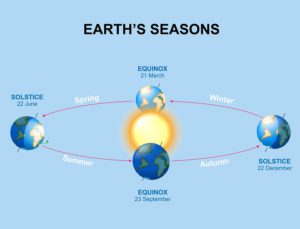
Seasonal Affective Disorder (SAD) is a kind of depression. It's believed to be related to the changing seasons, beginning and ending more or less the same time each year.
For most people, symptoms begin sometime around the fall and continued into winter. It eats away at your energy making you feel lethargic, moody, and shall we say – SAD.
If you have suffered from the “winter blues”, it could well have been SAD. It's important to be aware of because during these times, when you are feeling down, sometimes other maladies sneak in.
But there is a difference between having the winter blues and SAD.
Between September and March, many people do experience symptoms of having the ‘winter blues’. They don’t enjoy the darker mornings, the shorter days, eating more or going to work in the dark.
But when you have SAD, the feelings mentioned above are actually heightened and you can experience even more symptoms.
How is SAD Diagnosed?
There aren’t any medical tests which help a doctor diagnose you with SAD.
Health care professionals typically diagnose you with SAD if you have depression at the same time every year… Especially if you do not experience episodes during other seasons. Sometimes doctors won't even make a diagnosis until you have 2 or 3 seasons in a row with the same symptoms.
SAD is a bit tricky in that often, you kind of have to suffer through two winters of depression to diagnose it.
If the SAD symptoms are severe, doctors might prescribe antidepressants such as Paxil, or Zoloft, or Prozac. But, my advice is to steer clear of pharmaceuticals and instead treat it naturally.
Drugs have so many side effects that bypass natural bodily processes, so don't take them unless it is absolutely necessary! You will never heal your body or mind with a chemical.
Instead, you can use these 10 best treatments for Seasonal Affective Disorder. They come from natural sources and are prescription free.
Common SAD Symptoms
These are some of the most common SAD symptoms to watch for:
- Depression
- Feelings of sadness
- Feeling irritable
- Fatigue
- Little energy
- Insomnia
- Inability to concentrate
- Weight gain or loss
Symptoms and levels of intensity can vary from person to person.
Who is Likely to Get SAD?
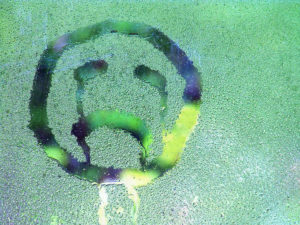
- The closer a person lives to the equator, the less likely they will develop SAD. So a person who lives in California or Florida might not have symptoms, but then start experiencing them if they move north. SAD affects 9.5% of the people in northern Finland and 9.9% of the population in Alaska. But it affects only 1.4% in sunny Florida. Last year in Moscow, people enjoyed just 6 minutes of sunshine in December compared to the 18 hours they normally get.
- Research shows that women are actually four times more likely to have this problem over men.
- The rates of SAD are also high for those who work night time and evening shift over those who do it during the day. Those people who work for extended periods without the sun in their lives like miners or those in submarines; are more likely to feel the effects of SAD.
- Sometimes alcohol abusers or people with mood disorders are also at greater risk of developing SAD.
- There is a difference between those classified with traditional depression and those with SAD symptoms. People with SAD are known to want to eat more, and they are inclined to gain weight with increased cravings for sweets and carbohydrates. Those who suffer from depressive symptoms usually have decreased appetite.
- Research from the National Institute of Mental Health believes that SAD occurs because people don’t get enough light. This led to the development of phototherapy. Light therapy has shown to be very successful in treating those with SAD. 80% of people noted that many of their symptoms were less after as little as 4 days of full-on light therapy for just 2 hours a day.
It is still not completely understood what causes SAD
Unfortunately, specific causes of seasonal affective disorder still are not fully known. But there are some factors that might be of importance, such as:
1. Disruption of your biological clock (circadian rhythm)
With reduced levels of sunlight, particularly in the fall and winter, SAD can “set in”. This is because decreased sunlight can disrupt the internal clock.
2. Serotonin levels drop off
The neurotransmitters of your brain drop and this can affect your mood and play a role in bringing on SAD. Reduced sunlight causes a drop in serotonin which can trigger off depression.
3. Melatonin levels change
Changes in the seasons can disrupt the balance of the body’s levels of melatonin. This can play a role in mood and sleeping patterns.
Are There Risk Factors to SAD?
As mentioned above, SAD is more in women than in men. It also appears to manifest itself more in younger people than in older people. Take a look at some factors that might increase the risks of SAD:
You have a family history: People with SAD might well have family who has experienced SAD or other types of depression.
You have either had bipolar disorder or major depression. SAD can get worse if you have had any of these conditions.
You live far from the equator. SAD is more prevalent in people who live far north or south of the equator due to decreased sunlight.
If you suffer from SAD, it is not something to take lightly. Unless it is dealt with, it can get worse. Here are some problems that can come your way if you allow it to carry on:
- You withdraw from the social scene
- You suffer from problems at school, college, or work
- There is substance abuse
- You can suffer from further mental issues like anxiety or eating disorders
- Your behavior could be suicidal or you have suicidal thoughts
Fortunately, there are natural treatments for seasonal affective disorder which can help and also prevent it.
10 Best Natural Treatments for Seasonal Affective Disorder

1. Good Digestion = Healthy Brain Cells
When you improve your digestion, your health and well-being naturally improve. Digestion is the process of taking the intelligence of food and transforming it into you. If you are eating and digesting well, the result is healthy brain cells and body tissue.
2. Nutritional Solutions for Seasonal Affective Disorder
- Omega-3 and 6 Fatty acids will help to support the nervous system, cognitive function, and hormonal balance
- Plenty of B Vitamins to help the nervous system function at its best and produce healthy hormones
- Probiotics for healthy gut flora
- It is important that you take an alkaline or anti-inflammatory diet
- CBD products – Many studies support the fact that CBD helps address symptoms of SAD. Insomnia and anxiety are the two major symptoms you can treat effectively with CBD.
3. Restorative, Restful Sleep is Essential for Health and Happiness
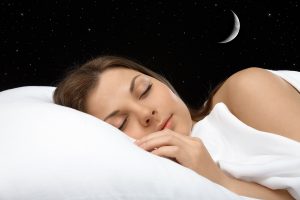
There are ways to ensure you get a good night of sleep including rituals you can keep.
Don't ever resign yourself to insomnia. Sleep is one of the three pillars of health and your health and happiness will be weakened unless you get adequate restorative sleep.
4. Exercise is Vital for Mental Health
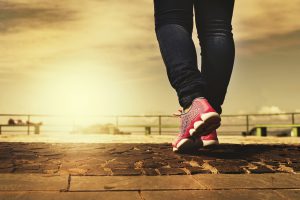
You may not feel like exercising when you don't feel well, but if you want to be healthy, happy, and mentally fit, exercise is vital. Feeling unmotivated is part of the illness, so it makes sense that exercising is a part of the cure.
When you are active, you increase the chemicals in the brain that make you feel good, easing up on the depressive feelings and also brain fog.
Just walking 30 minutes on a treadmill for 10 days in a row can significantly reduce your feelings of depression.
Research shows too, that it’s the consistency of doing exercises regularly that is more beneficial for you than the length of your exercise routine or the intensity of it – when you get the most positive results – remember to keep moving.
5. Meditation Stimulates Seratonin
Meditation stimulates the pineal gland. One of the theories about SAD is the disturbance of this gland. The pineal gland is involved in the regulation of serotonin and melatonin responsible for happy feelings and relaxation.
If you find it difficult to find the time to meditate or have trouble quieting your mind, I recommend Zen12 which uses brainwave entrainment. I wrote it about it here because it was a lifesaver for me at a difficult time when I was having difficulty with an extra chatty mind.
6. Get Outside in Sunshine
Try and sleep with your curtains open to get the sunshine in. When you see the rays of the sunshine, your body and brain will thank you for this natural tonic. And it will be even better if you can do your exercises outside as well… or try moving meditation!
7. Yoga Nidra for the Deepest Relaxation You'll Ever Reach
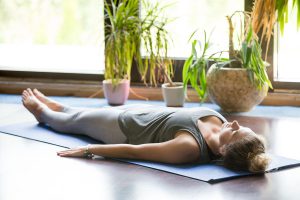
Yoga Nidra accesses your deepest, slowest brain waves, allowing your nervous system to recalibrate itself. If you are feeling restless or anxious in your body or mind, try Yoga Nidra to find peace in a short period of time.
8. Massage Increases Endorphins
Every system of your body can benefit from massage. Not only does it relax muscles, massage lowers heart rate and blood pressure and increases the output of endorphins to make you feel happy.
You can easily learn how to give yourself a self-massage here.
9. The Lightbox or Happy Lamp
Light therapy gives you exposure to artificial light that is bright enough for you to enjoy during the winter months. SAD patients can use light therapy every day, from the start of their symptoms until the spring when more often than not, the SAD resolves.
Most SAD patients need around 15-30 minutes of this light therapy every day and notice an improvement in the way they feel after 2-4 days already, with big improvements being felt within 2 weeks.
It is recommended that patients stay consistent with their treatment during the winter months. In fact, it is crucial.
It is often recommended that the lightbox treatments occur in the morning because if it used in the evening, people might find it difficult to fall asleep. You can get light therapy boxes without prescription.
10. Dawn Simulators
Dawn Simulators are devices to help people with Seasonal affective disorder. Rather than waking you up with a chime or music, they gradually release the intensity of light, just like the sun.
There are many models of dawn simulators, but the best ones have full-spectrum light, which is the closest to natural sunlight. The Journal of Affective Disorders published a study stating that Russian researchers found dawn simulators were as effective as light therapy for those with mild SAD.
Conclusion of 10 Best Natural Treatments for Seasonal Affective Disorder
If you think that you could be at risk of seasonal affective disorder, reach out to family and friends as well as a health professional. They might not be able to diagnose you in your first season, but if you believe that SAD could be “taking hold of you”, try these natural treatments for Seasonal Affective Disorder.
A 2013 study showed that by using light boxes beginning 30 minutes before waking up improved people's cognitive performance and mood for the rest of the day after that.
And British rowing, swimming, and cycling teams use dawn simulators on their athletes to help them in their early morning training sessions.
Today, light therapy boxes or other devices aren’t seen as strange voodoo science says Ruth Jackson from Lumie, a company that was one of the first in line to make sunrise alarms.
When it gets dark, the body produces more melatonin, preparing it to sleep. The dawn light suppresses the melatonin, waking people up and giving them a boost for their day ahead. It’s called the circadian rhythm – it’s our internal body clock. And it’s often why experts believe that the blue light produced on our smartphones interfere with our sleeping patterns.
But, red light helps us to relax. Today you can get an app that works like a smart light bulb and which changes the colors. Bedside lamps, too, are now being turned into sunrise alarms which turn red for night time going to bed.
Certainly, no one is claiming that light alone cures clinical depression and other types of depression. There is starting to be growing evidence that if we manage our lighting, we can improve our sleep patterns and also put some vigor into your step. It’s time to see the light and banish those winter blues.
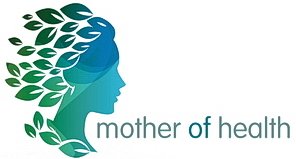
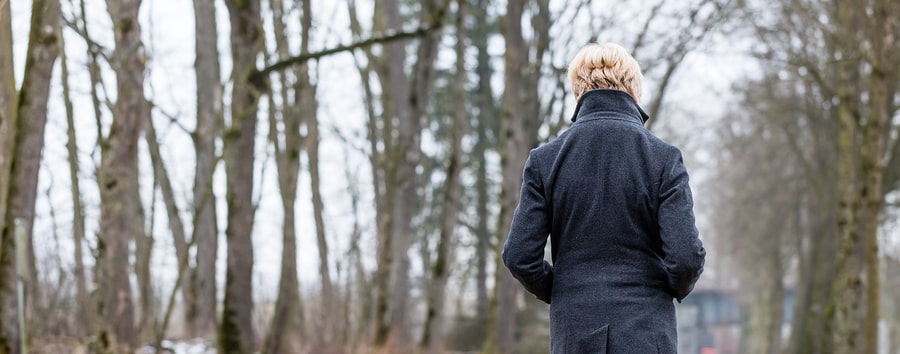

Thank you very much for such a detailed post. It is a valuable knowledge to me as often I see my wife getting sad for no reason when seasons change 😉 Now I can refer her to your post so she can start following your natural treatments. So far, I see the lack of exercise is what causes many people feeling tired, upset these days
You are welcome, Jack!
I have experienced a few episodes of Seasonal Affective Disorder myself and can attest to some effective treatment by taking melatonin hormone supplements. I was dealing with the insomnia,which in turn lead to the fatigue, and that turns into a depression. As you have explained here, it is not a pleasant experience.
I am glad to see someone dealing with this problem. I found the doctors like to put you on the antidepressants right away, but they made things worse for me. I did start to sleep, because they make you so tired all the time as well. But it was just a few hours and back awake. The melatonin was much better. I slept and didn’t feel under the influence of drugs, like the antidepressants. They are awful! Sadly, we get used to the melatonin, and it becomes less effective.
When I tried the meditation, I experienced the same problem you had, my mind is just to busy to get into a deep state. However, I did use new age music that was helpful, but didn’t quite cut it. So, I am getting excited about the Zen 12 product line and will be trying that! Thank you fro bring this to my attention!
Chas
Hi Chas,
Prescriptions for antidepressants are skyrocketing! They are the third most commonly prescribed class of drugs. There are so many side-affects! agitation, indigestion, diarrhea or constipation, weight gain, headaches, muscle twitching, low sex drive, insomnia… How can a happy pill be so miserable?
You will love Zen12! I started using it when I was going through a tough time awhile back and it really helped me. I still use it regularly years later because it worked so well.
Thanks for taking the time to connect and comment.
I’ve heard of S.A.D before. I can understand how this disorder affects people because I lived with it when I lived in New York. It happened to me a lot and I looked for solutions for it. The dark days of winter were the worst.
There were also times when it would rain for two weeks straight and it was depressing.Exercise helped me through it as did massage therapy.
But I did turn to light therapy because I read so much about it. It helped me immensely.I was also taking B vitamins and trying to get the best sleep that I could.
It’s better for me down here in Florida where the sun is out more and the weather is so much nicer.You really covered a lot here that should help others with seasonal affective disorder.
Thanks for sharing Rob! Hope you’re enjoying sunny Florida!
Your post about SAD is very interesting, together with your explanation of why people get SAD.
Like a good many people, I do experience a touch of the winter blues which come on in the autumn when the days are shorter and no longer warm. But I start to feel better once we have passed the shortest day. Even though the days are still very short, I always feel a surge of hope at that time because I know that days are only going to get longer from the winter solstice onwards, and Spring is on the way!
But I know that what I am experiencing is far milder than those people who do get SAD.
I really like the remedies which you suggest, particularly the self-massage and the use of exercise, and I may look into the use of a Lightbox, although I am not happy that they also release UV rays. Do you know if it is possible to get light boxes which screen the UV rays?
I am a lover of sunshine, and as you suggest I take every possible opportunity to get outside when it is sunny, and that always makes me feel better!
Many thanks for your extremely informative and helpful post.
Chrissie 🙂
Hi Chrissie,
The term “full spectrum” is a loosely-defined term, used differently by different companies within the lighting industry, but it always means light with a color temperature of at least 5,000 Kelvin.
Yes, there are UV Free models which we have linked to in the post.
Sending sunshine your way! 🙂
As a kind of chronically mildly depressed person, I am attracted to topics like this. I hadn’t previously heard of SAD. You have made a very thorough description, with causes and treatments. While you provide a scientific and/or rational basis, most of the treatments seem like common sense things to take care of like diet, sleep and activities that I use to push through my depressed moments. You do a good job of explaining how these sorts of measures are effective.
Some of your other topics look interesting, as well. I’ll check back in and do some more reading and keep you in mind for your new posts.
Thanks,
Joe
Thanks for stopping by, Joe! If you need anything, or have questions , let us know how we can help.
I love finding people with similar mindsets 🙂 It makes me happy. I love your page and I can’t wait to read more!
How sweet of you to take the time to connect. I appreciate it very much, Lisa! xo